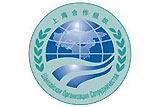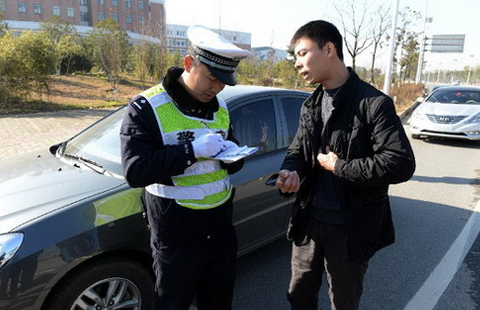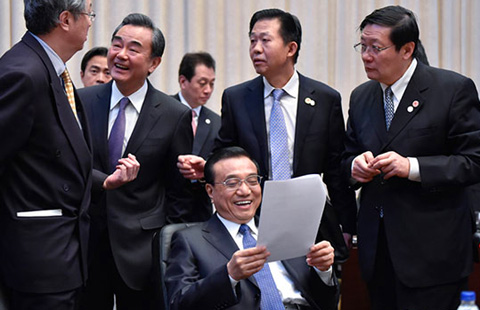LatAm-China ties key to turnaround
Updated: 2014-12-19 00:13
By Yang Yao in Beijing(China Daily Latin America)
|
||||||||
Technology and innovation cooperation between China and Latin America is needed to cope with economic slowdown and facilitate structural changes in the two emerging markets, says a Chinese scholar.
Latin America's GDP growth rate has slowed down in 2014, dropping below 1.5 percent, according to the report jointly released by the Development Center of the Organization for Economic Cooperation and Development (OECD), the United Nations Economic Commission for Latin America and the Caribbean (UN-ECLAC) and the Development Bank of Latin America, known by its Spanish acronym, CAF.
The report, Latin American Economic Outlook 2015, notes that this is the first time in a decade that the region has grown less than the OECD average, and that any recovery in 2015 is likely to be challenging.
The three international organizations called for action to address this slowdown, focusing on the role of education and skills, and noting that despite some recent progress, more needs to be done to raise educational standards and address persistent and substantial socioeconomic inequalities.
"If we want to avoid a decade of low growth in Latin America, we must improve education standards, enhance skills in the workforce and boost innovation," said OECD Secretary-General Angel Gurría following the release of the report at the Ibero-American Summit on December 9 in Veracruz, Mexico. "Policymakers need to undertake ambitious efforts to unleash higher and more equitable growth,"
Structural change - such as the diversification of the economy towards knowledge-intensive sectors - is needed to supply the increasing demand for skilled workers.
Alicia Bárcena, executive secretary of UN-ECLAC, said "without the transformation of the production structure there will be a link missing in the chain that connects education, productivity and innovation."
Zhang Yong, associate professor with the Institution of Latin America Studies under the Chinese Academy of Social Sciences, said that the economic recession in Europe and the US, as well as the structural changes in Latin American countries are the two causes of the slowdown.
Zhang said that the change, if carried out properly, would bring more efficiency and boost the economy in the long-term future.
"In the absence of an exceptionally favorable external environment, the region needs to deepen regional integration and address the structural challenges of development, to support its growth potential, primarily in the areas of innovation and production patterns, and education and technical capacities that these require," said Enrique García, CAF president and chief executive officer.
The outlook report notes that, on average, the gap in education performance for a student in secondary school in Latin America relative to an OECD student is still quite high: the equivalent of 2.4 additional years of schooling. Furthermore, socioeconomic inequalities strongly influence both access and education outcomes in the region. Only 56 percent of students in the poorest quarter of the population attend secondary school, versus 87 percent of students in the wealthiest quarter.
The report pointed out that the limitations in the quality of education are also reflected in the skill shortages and mismatches in the labor market, severely impacting the competitiveness of Latin American companies. The region's businesses face greater challenges in finding appropriately skilled employees than any other region in the world.
The outlook report states that the probability of a Latin American firm facing obstacles in finding staff with the adequate capabilities is three times higher than a similar firm in South Asia and 13 times higher than a firm in Pacific Asia. The issue is particularly prevalent in key sectors such as the automotive industry and machinery.
This year in July, Chinese President Xi Jinping visited Latin America and established more comprehensive partnership between the two sides, including technology cooperation.
He signed more than 150 contracts and framework agreements with the four countries visited, involving a total amount of approximately $70 billion and "covering areas such as energy, mining, electric power, agriculture, science and technology, and infrastructure construction and finance."
In support of such objectives, Xi proposed the establishment of a "1+3+6 framework" that includes cooperation in scientific and technological innovation, as well as information technologies.
"China and Latin America are witnessing an increasing reliance on each other in their development," he said. "This could be a good way to tackle the acute skills shortages in LAC," said Zhang.
yangyao@chinadaily.com.cn
Most Viewed
Editor's Picks

|

|

|

|

|

|
Today's Top News
New dynamic as US, Cuba restore relations
Oil's fall 'huge gift' for China: expert
China, US to act on food issues
VP assures on US economic ties
Testing procedure curtails US hay exports to China
Tech giants gain ad-market share
China set to make tracks for Europe
US moves to normalize relations with Cuba
US Weekly

|

|















